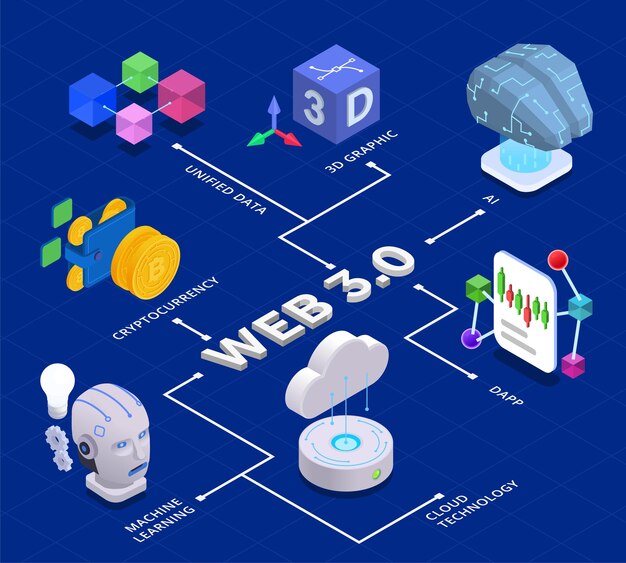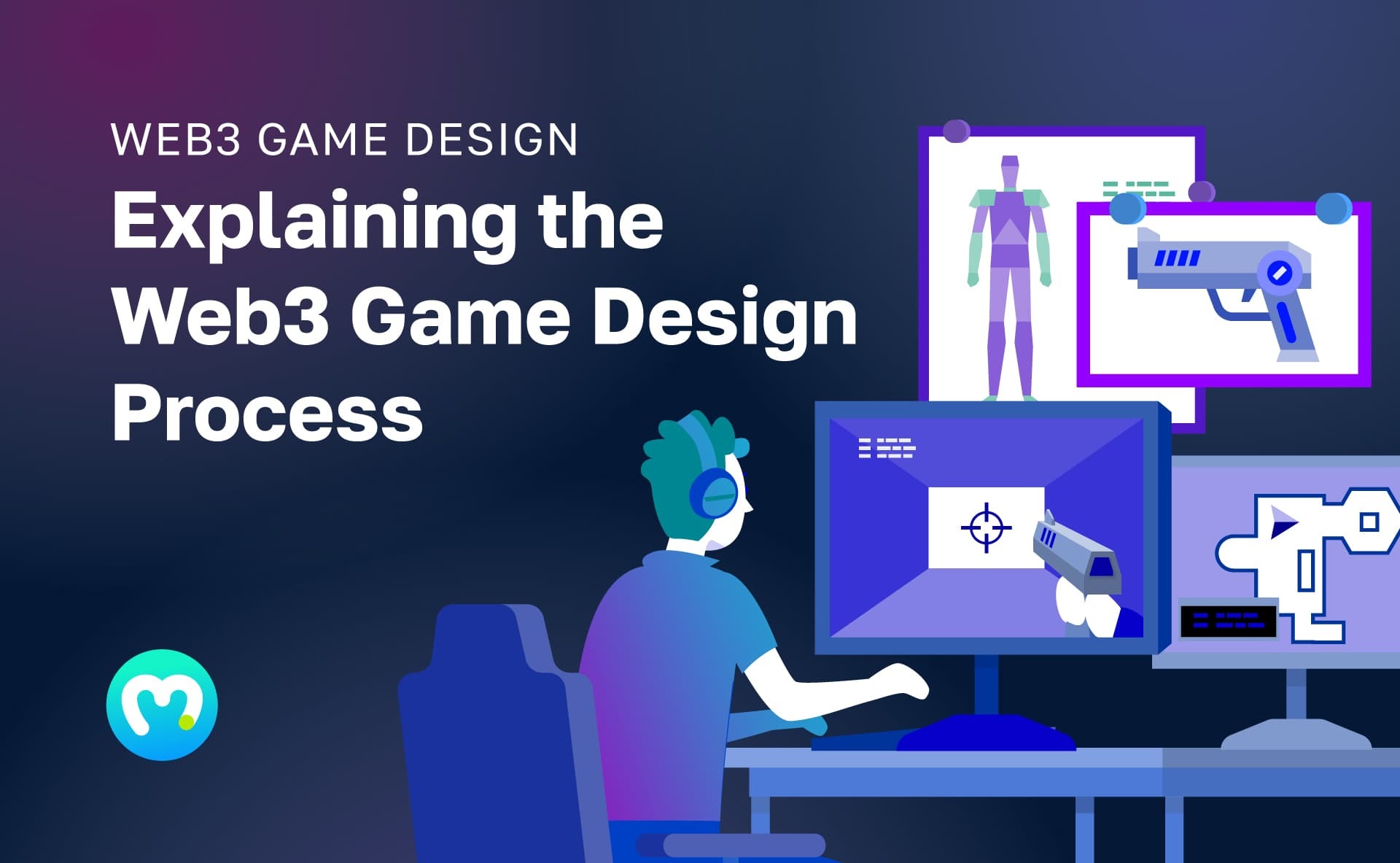Building Your Own Web3 Project: Step-by-Step Guide for You
The evolution of the internet into Web3 represents a paradigm shift towards decentralization, blockchain technology, and user empowerment.
Web3 projects are transforming industries by enabling peer-to-peer transactions, enhancing security, and promoting transparency.
This comprehensive guide will take you through the process of building your own Web3 project, from conceptualization to deployment.
Conceptualization and Planning

- Identify the Problem and Solution
The first step in building a Web3 project is identifying a problem that can be effectively solved using blockchain technology.
Consider issues that require decentralization, trust, and transparency. Examples include supply chain transparency, decentralized finance (DeFi), and digital identity verification.
Once you've identified a problem, brainstorm potential solutions and define the core features of your project.
- Market Research and Feasibility Study
Conduct thorough market research to understand the competitive landscape and the demand for your solution.
Analyze existing projects and identify gaps that your project can fill. A feasibility study will help you assess the technical, economic, and legal viability of your project. This includes understanding regulatory requirements and potential barriers to entry.
- Define Your Project Scope
Clearly define the scope of your project, including its goals, target audience, and key functionalities.
Create a detailed project plan that outlines the development stages, timelines, and resources required. Setting clear milestones will help you track progress and ensure that the project stays on course.
- Assemble Your Team
Building a successful Web3 project requires a multidisciplinary team with expertise in blockchain development, smart contract programming, frontend and backend development, and user experience design.
Additionally, consider including members with skills in marketing, community management, and legal compliance. A well-rounded team will increase the likelihood of your project's success.
Design and Development

- Choose the Right Blockchain Platform
Select a blockchain platform that aligns with your project’s needs. Ethereum is a popular choice due to its robust smart contract capabilities and large developer community.
Other platforms like Binance Smart Chain, Solana, and Polkadot offer unique features that might be better suited to your project.
Consider factors such as transaction speed, cost, scalability, and security when making your decision.
- Develop Smart Contracts
Smart contracts are self-executing contracts with the terms of the agreement directly written into code.
These are the backbone of any Web3 project. Use programming languages such as Solidity (for Ethereum) to develop your smart contracts. \
Ensure that your smart contracts are secure and free from vulnerabilities by conducting thorough testing and audits.
- Build the Frontend and Backend
The frontend of your Web3 project is what users interact with. Use modern web development frameworks such as React or Vue.js to build a user-friendly interface.
The backend will handle interactions with the blockchain and may include servers for data storage and processing. Use tools like Web3.js or Ethers.js to connect your frontend with the blockchain.
- Integrate Wallets and Payments
Integrating cryptocurrency wallets like MetaMask into your project is crucial for enabling users to interact with your application. Ensure that your project supports seamless transactions and payments.
Consider implementing multi-signature wallets for enhanced security, especially for projects involving significant financial transactions.
- Testing and Quality Assurance
Thoroughly test your Web3 project to ensure it functions as intended. Conduct unit tests, integration tests, and user acceptance tests. Pay special attention to the security of your smart contracts and the overall user experience.
Engaging a third-party auditor to review your smart contracts can provide an additional layer of security and confidence.
Deployment and Launch
- Deploy Smart Contracts to the Mainnet
Once your smart contracts have been thoroughly tested and audited, deploy them to the blockchain mainnet. This step makes your smart contracts live and accessible to users.
Ensure that you have sufficient funds to cover the deployment costs, as deploying to the mainnet can be expensive depending on the blockchain you are using.
Launch the Frontend Application
Deploy your frontend application to a reliable hosting service. Platforms like Netlify, Vercel, or AWS offer robust hosting solutions for web applications.
Ensure that your frontend is optimized for performance and security. Implement SSL certificates and other security measures to protect user data and interactions.
Community Building and Marketing
Building a strong community is vital for the success of your Web3 project. Engage with potential users and stakeholders through social media, forums, and community platforms like Discord and Telegram.
Share regular updates, tutorials, and insights to keep your community informed and engaged. Consider running a token airdrop or bounty program to incentivize early adopters.
Legal and Regulatory Compliance
Ensure that your project complies with relevant legal and regulatory requirements. This includes data protection laws, financial regulations, and securities laws if your project involves token issuance.
Consulting with a legal expert specializing in blockchain and cryptocurrency can help you navigate the complex regulatory landscape.
Maintenance and Continuous Improvement
- Monitor and Maintain the Project
After the launch, continuously monitor your Web3 project for performance and security issues.
Use analytics tools to track user engagement and identify areas for improvement. Regularly update your smart contracts and application to fix bugs, add new features, and enhance security.
- Gather User Feedback
User feedback is invaluable for the continuous improvement of your project. Encourage users to share their experiences and suggestions through surveys, community forums, and social media.
Actively listen to your community and implement changes that enhance the user experience and functionality of your project.
Scale and Expand
As your project grows, consider scaling your infrastructure to accommodate increasing user demand.
Explore layer 2 solutions and other scalability options to improve transaction speed and reduce costs.
Additionally, consider expanding your project’s scope by adding new features, integrating with other blockchain platforms, or entering new markets.
Stay Updated with Industry Trends
The Web3 space is rapidly evolving, with new technologies, standards, and best practices emerging regularly.
Stay updated with the latest industry trends by following reputable sources, attending conferences, and participating in developer communities.
Continuous learning and adaptation are key to maintaining the relevance and success of your Web3 project.
Conclusion
Building a Web3 project involves a detailed and structured approach, from conceptualization to continuous improvement. By following this step-by-step guide, you can navigate the complexities of Web3 development and create a successful, impactful project. Embrace the power of decentralization and innovation to transform your ideas into reality.



































